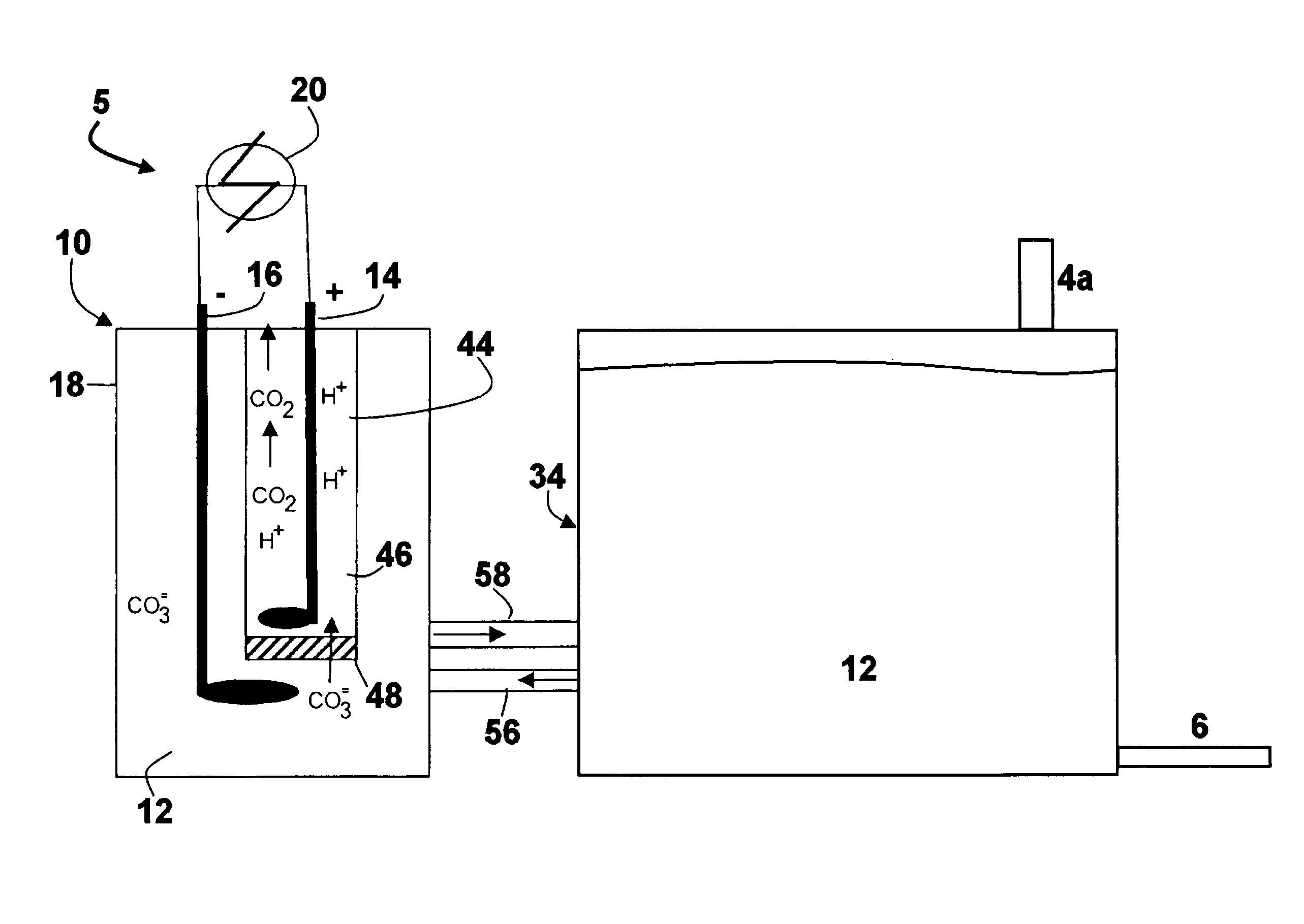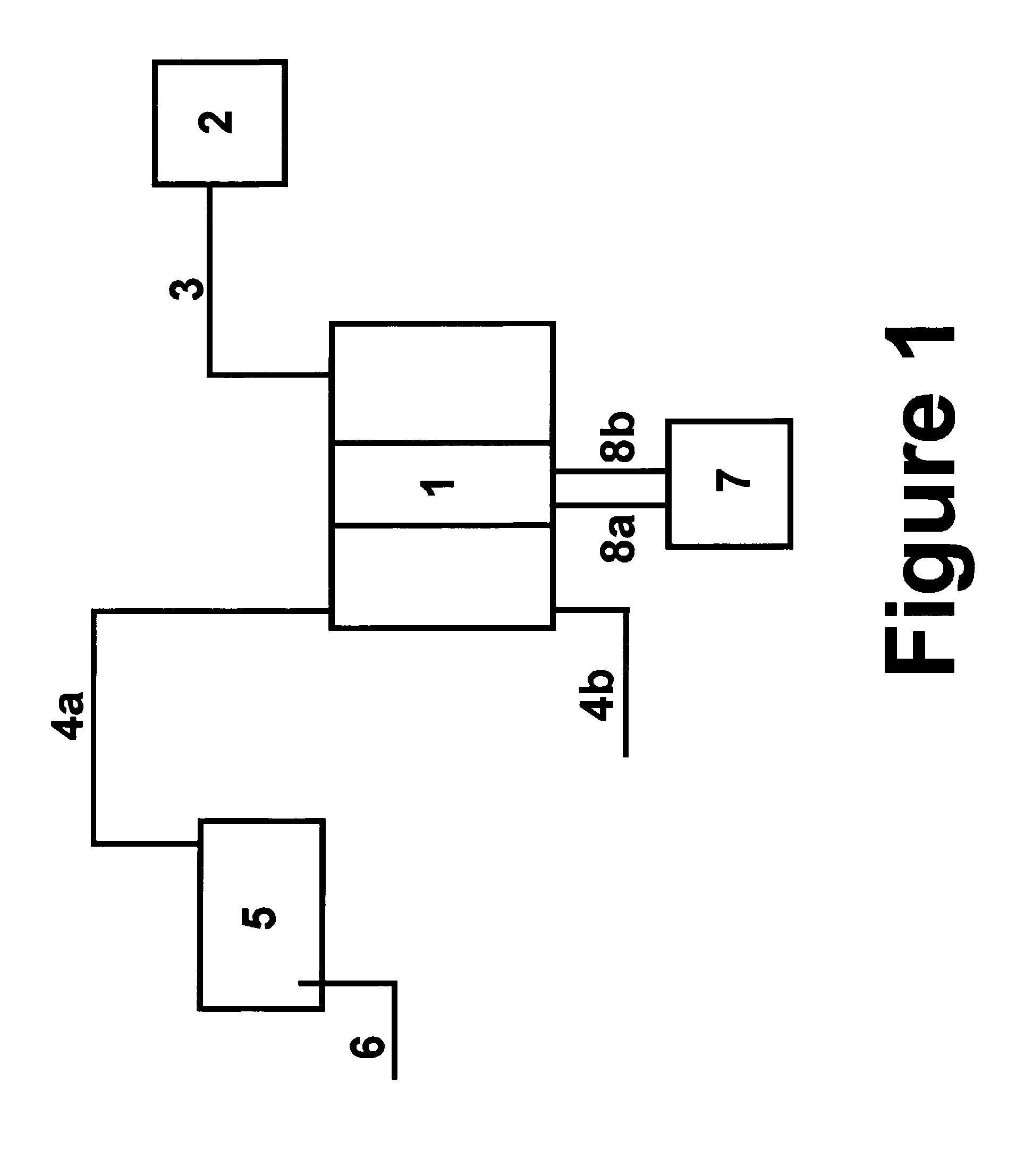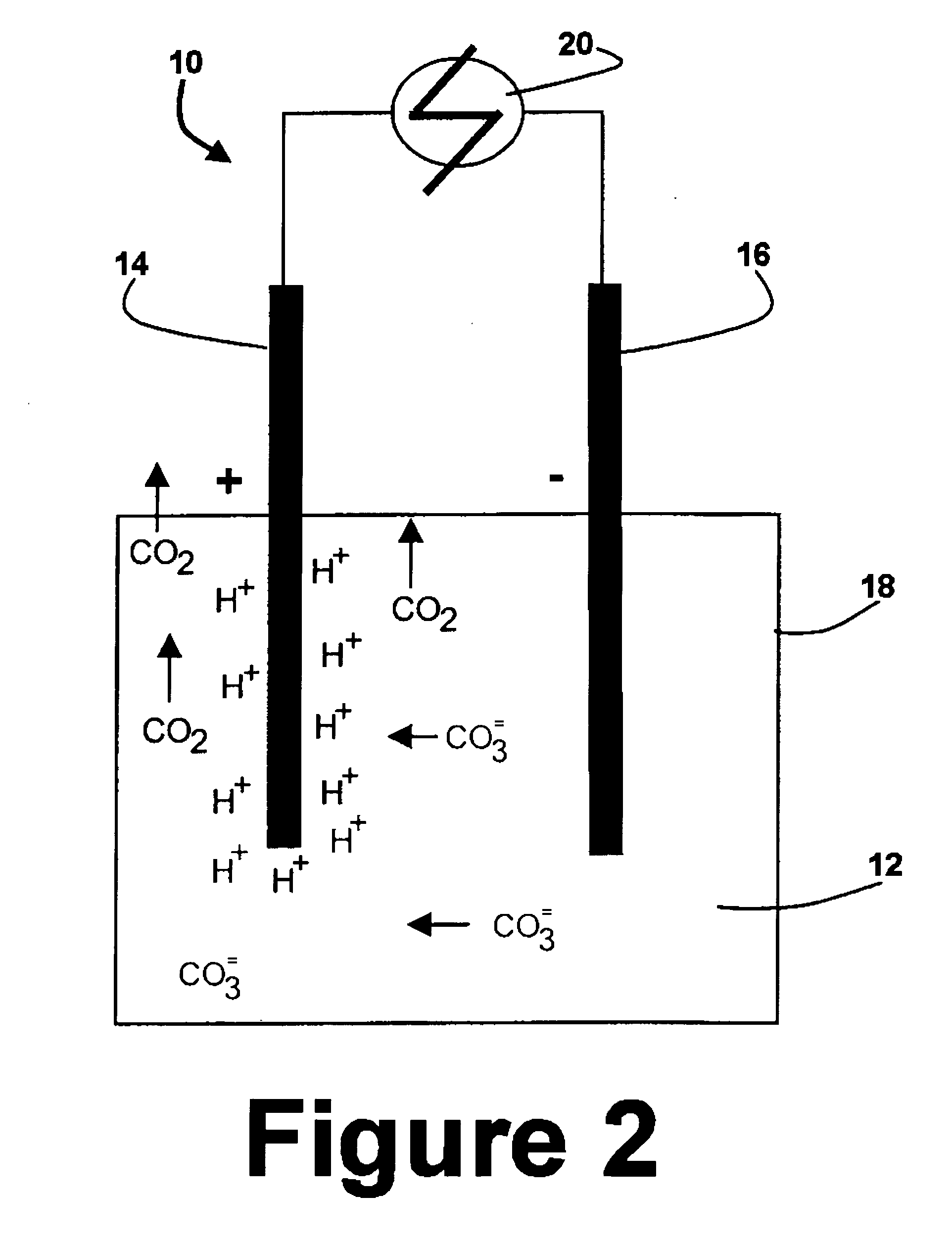Remote emergency power unit having electrochemically regenerated carbon dioxide scrubber
a technology of carbon dioxide scrubber and power unit, which is applied in the direction of electrochemical generators, fuel cells, electrical apparatus, etc., can solve the problems of carbonate poisoning of the fuel cell electrolyte, wide use of fuel cells, and reduced fuel cell performan
- Summary
- Abstract
- Description
- Claims
- Application Information
AI Technical Summary
Problems solved by technology
Method used
Image
Examples
Embodiment Construction
[0029]In its most basic form, the present invention is a self-contained, electrochemically regenerative, air scrubber for removing carbon dioxide from air. The scrubber is very useful in combination with fuel cell systems which use air as the oxidant therefore, and is particularly useful in combination with alkaline fuel cell systems. The combination of the air scrubber and fuel cell system is particularly useful for emergency backup power applications, especially those used in remote locations.
[0030]FIG. 1 depicts a fuel cell emergency power system as contemplated by the instant invention. The system includes a fuel cell 1, connected to a source of fuel 2 by a fuel supply line 3. Typically the fuel is hydrogen and the source includes a hydrogen storage means of some sort. Particularly safe and useful is storage of hydrogen in metal hydride storage tanks. Such tanks or small canisters are becoming commercially available and as such are readily available and interchangeable as needed...
PUM
 Login to View More
Login to View More Abstract
Description
Claims
Application Information
 Login to View More
Login to View More - R&D
- Intellectual Property
- Life Sciences
- Materials
- Tech Scout
- Unparalleled Data Quality
- Higher Quality Content
- 60% Fewer Hallucinations
Browse by: Latest US Patents, China's latest patents, Technical Efficacy Thesaurus, Application Domain, Technology Topic, Popular Technical Reports.
© 2025 PatSnap. All rights reserved.Legal|Privacy policy|Modern Slavery Act Transparency Statement|Sitemap|About US| Contact US: help@patsnap.com



